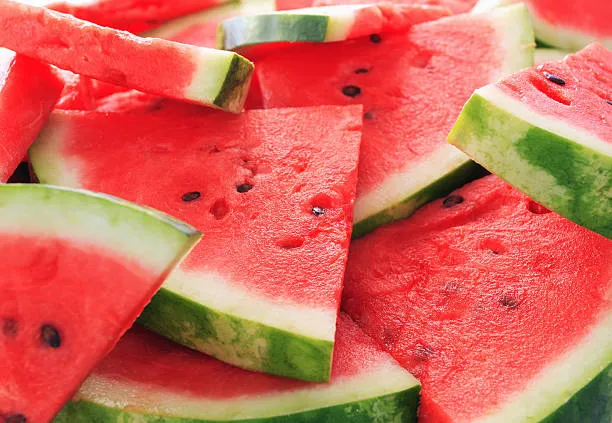Staying hydrated is vital for good health, and eating foods with high water content boosts your water intake.
Wondering how much you need?
There’s no one-size-fits-all answer, but these foods can help maintain hydration while also improving your diet.
Here are some top water-rich foods with their percentage of water listed:
1. Cucumber (96%)
Cucumbers are water-filled wonders. Low in calories, they provide potassium and vitamin A. Even pickled, this summer staple is a winner.
2. Lettuce and greens (96%)
Of all the varieties, iceberg lettuce has the highest water content, but don’t discount romaine and green leaf lettuces.
Darker greens provide more nutrients like magnesium, potassium and also vitamin K, which helps keep bones strong and blood clotting properly. All greens can be the base of a tasty, healthful salad.
For variety, try arugula (or rocket), at 93% water. It’s low-calorie, nutrient-dense and hydrating.
3. Tomatoes (94%)
Whether they’re fresh and raw or canned and diced, tomatoes are great for hydration. All are rich in vitamin C, beta carotene and lycopene, a strong antioxidant that studies indicate may reduce the risk of prostate cancer.
4. Watermelon (92%)
Unsurprisingly, this fruit’s name alone tells you it’s super-hydrating.
Consider adding cucumber and mint to make a refreshing, hydrating smoothie or snack on cubes throughout the day.
Melons like cantaloupe and honeydew have high water content as well.
5. Bell peppers (90%)
No matter the color — green, red, yellow or orange — bell peppers offer a water boost and great nutrition. Just one-half cup of red bell pepper provides more than a full day’s supply of vitamin C, according to the National Institutes of Health. That’s almost the same as three-quarters of a cup of orange juice.
6. Milk (88 – 90%)
All types of dairy milk are a great source of hydration and protein, providing about 8 grams of protein per cup.
Milk is absorbed slowly into the bloodstream, which means it helps your body retain fluid longer than other beverages. Remember to choose low-fat and non-flavored options to avoid excess calories.
7. Plant-based milk (83 – 95%)
Not excited about dairy milk? You could consider:
· Coconut milk is hydrating, with nearly 95% water, and provides antioxidants. It has a lot of saturated fat, though, so enjoy in moderation.
· Almond milk has a 95% water content, but choose your flavor carefully. A cup of the sweetened, vanilla-flavored versions can have the equivalent of almost four teaspoons of sugar.
· Soy milk is rich in omega-3 fatty acids, phytoestrogens, vitamins and minerals.
· Rice milk is hydrating and full of calcium, but higher in carbohydrates than some other choices for those watching their blood sugar.
8. Soup (91%)
In summer months, cold soup provides great nutrition, hydration and doesn’t heat up the kitchen. Try gazpacho, a Spanish soup traditionally made with tomatoes, cucumbers, red onion and garlic. Or consider cucumber soup, which is made of cucumbers, Greek yogurt and herbs like dill.
9. Berries (84% – 91%)
Strawberries are the most hydrating at 91% water, but blackberries, raspberries, and blueberries aren’t far behind. Naturally sweet, they can be a smoothie or snacking staple as well as an antioxidant and vitamin powerhouse.
10. Oranges (85%)
Oranges are well known for being rich in vitamin C. They also offer nutrients like potassium, vitamin A and lutein, which is linked with a lower risk of developing cataracts.
Add a few thin slices to iced water for a healthy alternative to soda.
Incorporating these water-rich foods into your diet can help you stay hydrated and nourish your body with essential nutrients. Remember to listen to your body’s thirst cues and prioritize hydration throughout the day.
Looking for more nutritious and thirst-quenching foods? Most don’t come with a label, but online databases including FoodData Central from the U.S. Department of Agriculture can provide more ideas.
For more health and wellness tops, visit Geisinger.org/balance.
